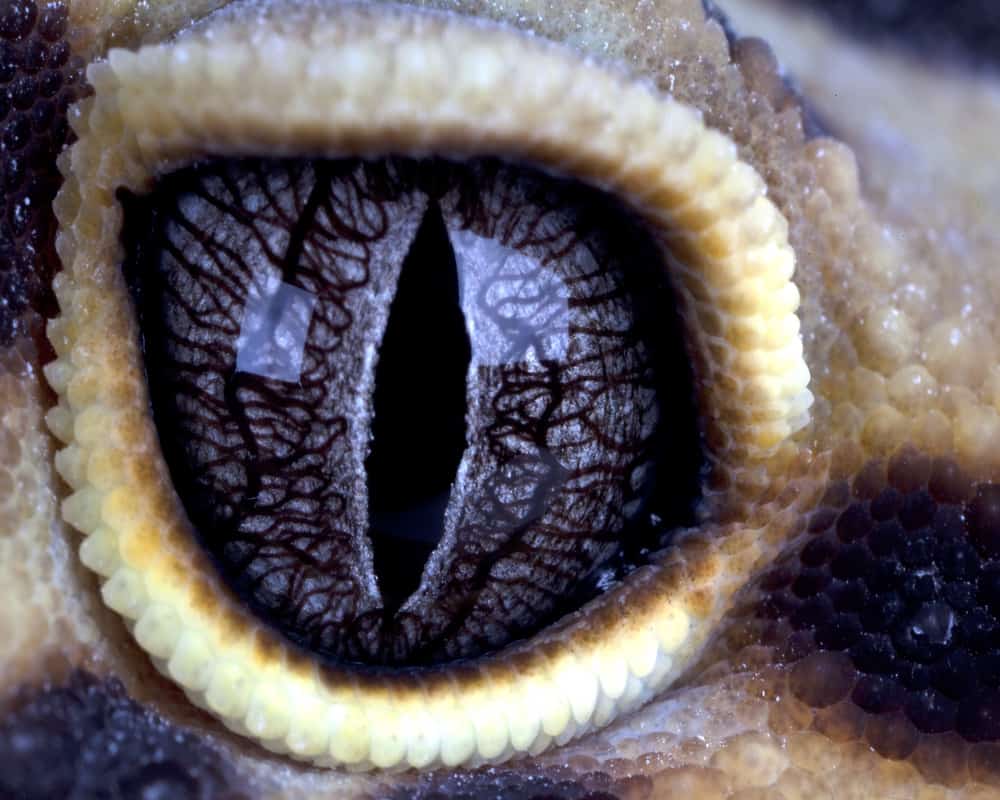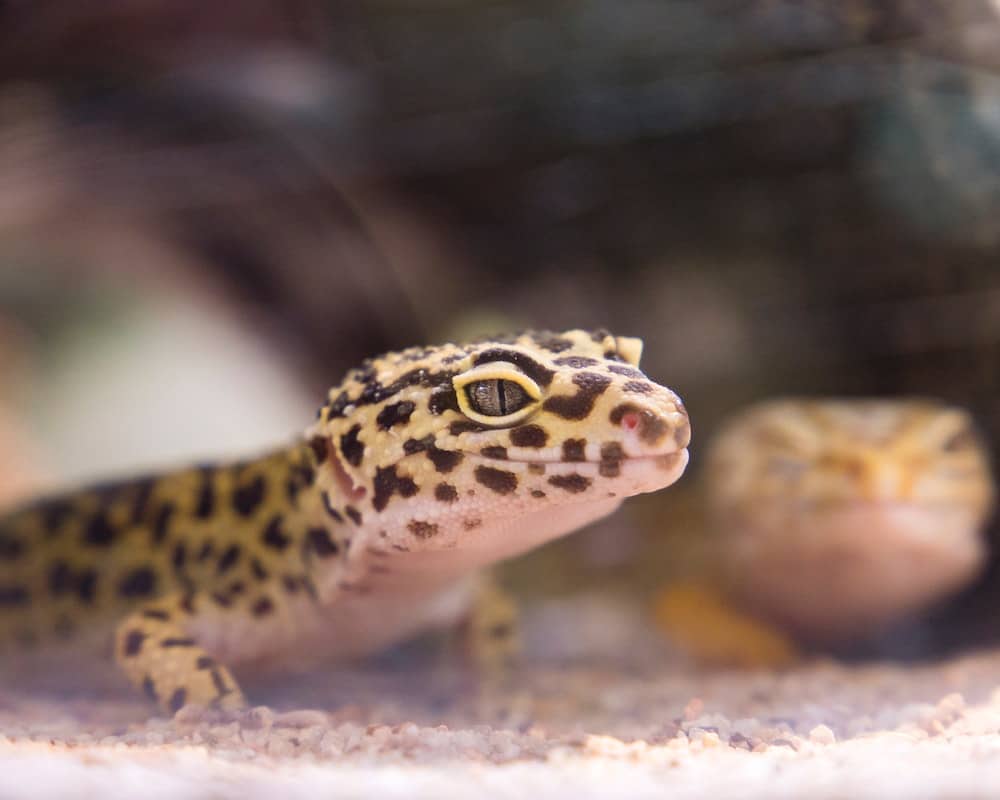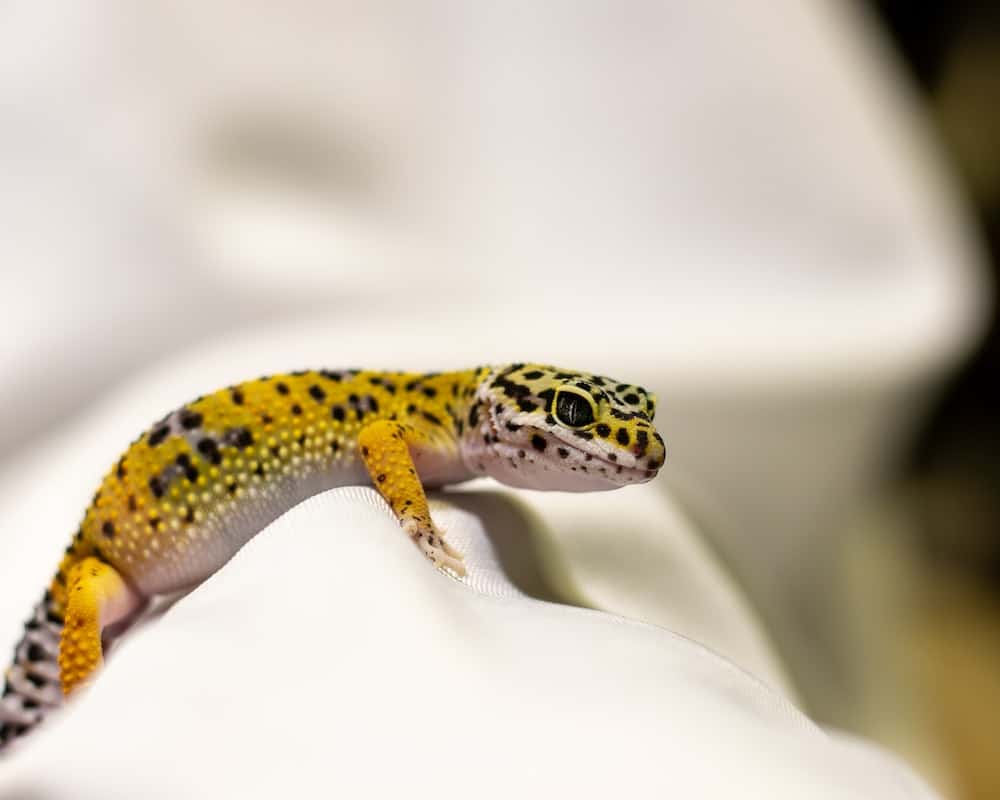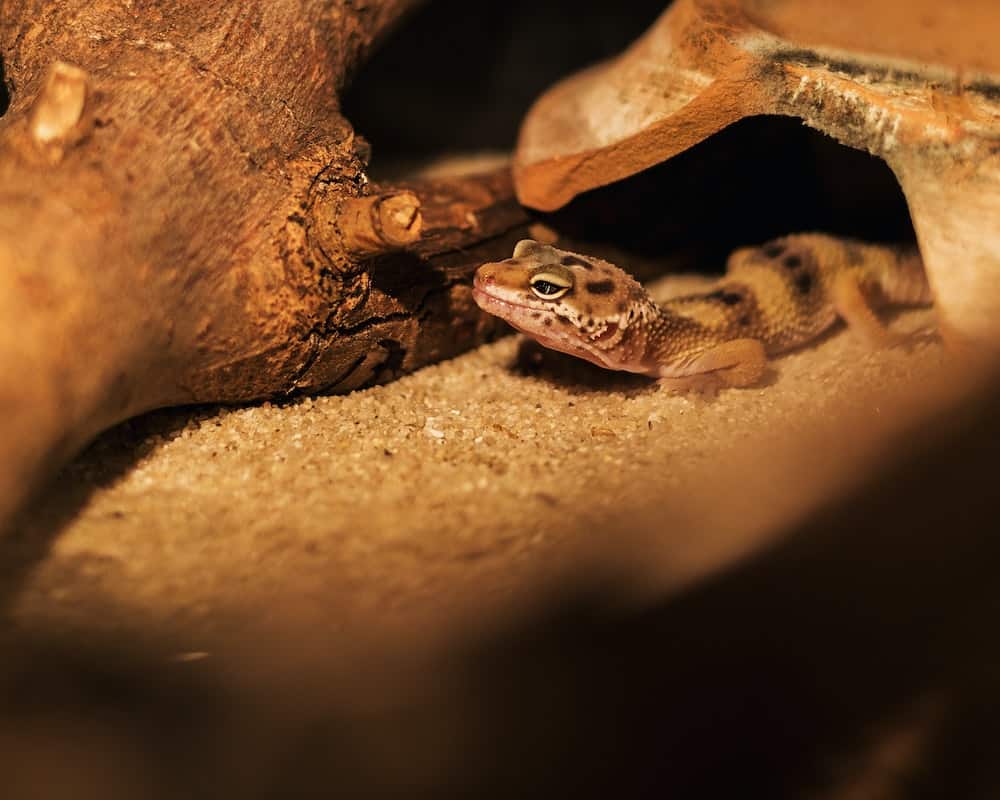Are you wondering whether leopard geckos can get infections in their eyes? If so, what are its symptoms? How dangerous are leopard gecko eye infection symptoms? How can you detect the signs of an eye infection?
Leopard geckos, like many other reptiles, can develop eye infections that need to be treated with care and as early as possible. It is not particularly fatal but can be dangerous if not treated on time. Some of the symptoms that you may notice will be redness in the eye or an unusual discharge from the eye.
What May Cause Leopard Gecko Eye Infection Symptoms?
Leopard geckos have large rounded eyes that are relatively bigger when compared to the proportion of their head. These eyes can be prone to a number of infections from bacteria, fungi, or even viruses. Here is a list of causes that can lead to eye infections in leopard geckos:
- Bacteria Or Fungi
Bacteria and Fungi are one of the primary reasons that leopard geckos can catch an eye infection. Bacteria can enter the eye through unclean water or any dirty substrate and lead to swelling.
Fungal organisms from unclean environments can collect on the eye and cause infection as well.
- Injury Or Trauma
Any injury to the eye or pre-existing trauma can also cause infection to the eye of your leopard gecko. Any scratches or accidents that involve the eye can lead to an eye infection.
- Environment Conditions
Unclean environmental conditions where the living conditions are not sanitary or cleaned regularly can cause the immune system of the leopard gecko to plummet and lead to an eye infection.
Sometimes, even the incorrect temperature and humidity level can lead to an eye infection.
- Irritants In The Air
Many times leopard geckos may have an eye infection because of various irritants that are present in the air that is constantly exposed to their eye.
Irritants like dust and chemical substances present in the air can lead to irritation in the eye and eventually lead to an eye infection.
- Pre-Existing Health Issues
Sometimes, if a leopard gecko is already prone to infections due to lack of proper diet or a low immune system since birth, it can lead to eye infection as well.
Top 8 Symptoms Of An Eye Infection In Leopard Geckos
There are quite a few symptoms that you can spot to see an incoming eye infection in your leopard gecko. These infections can range from intense to mild depending on the severity and cause of it.
It is a good idea to be aware of these symptoms well in advance so that you can spot them early and take action as soon as possible.
Here is a list of symptoms to look out for:
- Discharge From The Eye
Constant production of discharge from the eye is a clear sign of an eye infection in leopard geckos. The type and appearance of the discharge can provide important clues about the underlying cause of the infection.
The discharge may be of many kinds, and it is important to observe which one it might be. The discharge may be either watery in nature, mucoid or pus-like.
Clear Discharge
When the discharge looks watery and resembles tears, this is a watery discharge and can show early signs of an infection. This occurs consistently and in regular intervals, which seems more unusual than normal.
If you notice this with your leopard gecko, it is important to get it checked with the vet.
Pus-like Discharge
This discharge looks thick and gives a yellow or orangish appearance. This is generally much thicker than a clear discharge and has a color to it.
It may indicate a severe bacterial infection as pus discharges are not normal or indications of mild infections.
Mucus-like Discharge
When your leopard gecko has a thick mucoid discharge with a greenish or yellow appearance, this suggests a serious infection as well.
It is generally seen in a swollen eye and is a great indication of an incoming eye infection.
- Swelling Of The Eye The Surrounding Area
Swelling of the eye and surrounding area is another common symptom of an eye infection in leopard geckos. When an infection or inflammation occurs, it can lead to localized swelling.
The eye of the leopard gecko may seem bulged and swollen to the extent that it may not be able to move properly.
The swelling can range from mild to severe depending on the cause of the eye infection and the number of days since it has been infected. A less swollen eye may be unnoticeable, but signs of puffy eyelids or swelling in the surrounding area may alert you of the infection.
Eye swelling can be a sign of a more serious infection or other underlying health issues, so timely veterinary intervention is crucial for the well-being and recovery of your leopard gecko.
- Excessive Squinting And Blinking
Another common symptom of eye infection in geckos is excessive squinting and blinking of the eyes. Your leopard gecko may partially close the affected eye or both eyes to reduce discomfort and irritation. This squinting action helps them protect their eye and alleviate pain.
Your pet leopard gecko may even blink rapidly or more frequently than usual. This behavior can be a response to the discomfort or irritation caused by the eye infection.
These symptoms of squinting and excessive blinking are indicative of an underlying issue affecting the eye and may require immediate attention from a vet.
- Constant Fidgeting And Restlessness
Constant fidgeting and restlessness can be associated with an eye infection in leopard geckos as well. When the eye is infected or irritated, the discomfort and pain can cause your pet gecko to show constant restlessness and increased movement.
Your leopard gecko may showcase restless movements, such as repeatedly shifting positions, pacing, or twitching. This constant fidgeting can be a response to the discomfort and urge to dull the irritation in the affected eye. It may appear unsettled and restless, showing increased activity levels or a constant need to move around.
- Difficulty In Opening The Eye
Another major and obvious symptom of an eye infection is difficulty in opening the eye. Your leopard gecko may have a lot of difficulty in keeping its eye open constantly as it may experience pain and strain.
Sometimes, in order to lessen the pain, your gecko may be trying to keep its eye closed throughout. You will also notice that it is very difficult for your leopard gecko to open their eyes, especially in the mornings or against slightly higher intensity of light.
- Excessive Tears From The Eye
Shedding excessive tears from the eye is another symptom and indication of an oncoming eye infection in a leopard gecko. It is important that you know the difference between a normal tear production and an abnormal one.
Tear production can be classified as abnormal when you notice an increased amount of tears and a lot of wetness in the area surrounding the eye. You may also notice a watery discharge because of excessive tear production.
The eye will also constantly be moist and damp.
- Redness In The Eye
A common symptom of eye infection in leopard geckos is redness in the eye. Usually, a leopard gecko has clear and bulgy eyes. However, slight redness or deep redness in the eye is an indication of an eye infection.
It usually indicates inflammation and may lead to swelling, discomfort, and discharge.
The redness in a leopard gecko’s eye usually causes irritation in the eye and makes your pet fidget constantly. If you notice even slight redness in the eye, it is important to take your pet leopard gecko for a checkup to the vet so that it can get treated.
- Difficulty In Moving The Eye
Difficulty moving the eye can be a concerning symptom when it comes to eye infections in leopard geckos. It indicates that there may be significant inflammation, pain, or impairment affecting the eye.
Generally, when your leopard gecko is having difficulty moving its eye or appears to have restricted eye movement, it could be due to pain, swelling, or infection affecting the eye muscles or surrounding structures.
In some rare cases, an untreated eye infection can lead to scarring, which can restrict the movement of the eye completely.
What Should I Do When I Notice These Symptoms?
When you notice any of these symptoms in your leopard gecko, you should immediately seek veterinary care, as they can diagnose the eye infection and recommend appropriate treatment and antibiotics.
You may be given specific instructions to treat the infection that you should follow carefully and provide the medications on time.
Also, ensure you maintain the hygiene of your gecko’s environment and provide good nutritious food to improve its immunity levels.
For further information on eye infections in leopard geckos, check out this video by a certified veterinarian doctor.
Conclusion
Remember not to delay treatment for your leopard gecko on any signs of these symptoms, as it is always better to get it checked as soon as possible.





Great article! It’s important for leopard gecko owners to keep an eye out for symptoms like redness, discharge, and swollen eyelids to catch eye infections early.
Hi Katie,
Thank you for your comment and I’m glad you enjoyed it!
Regards
Larry